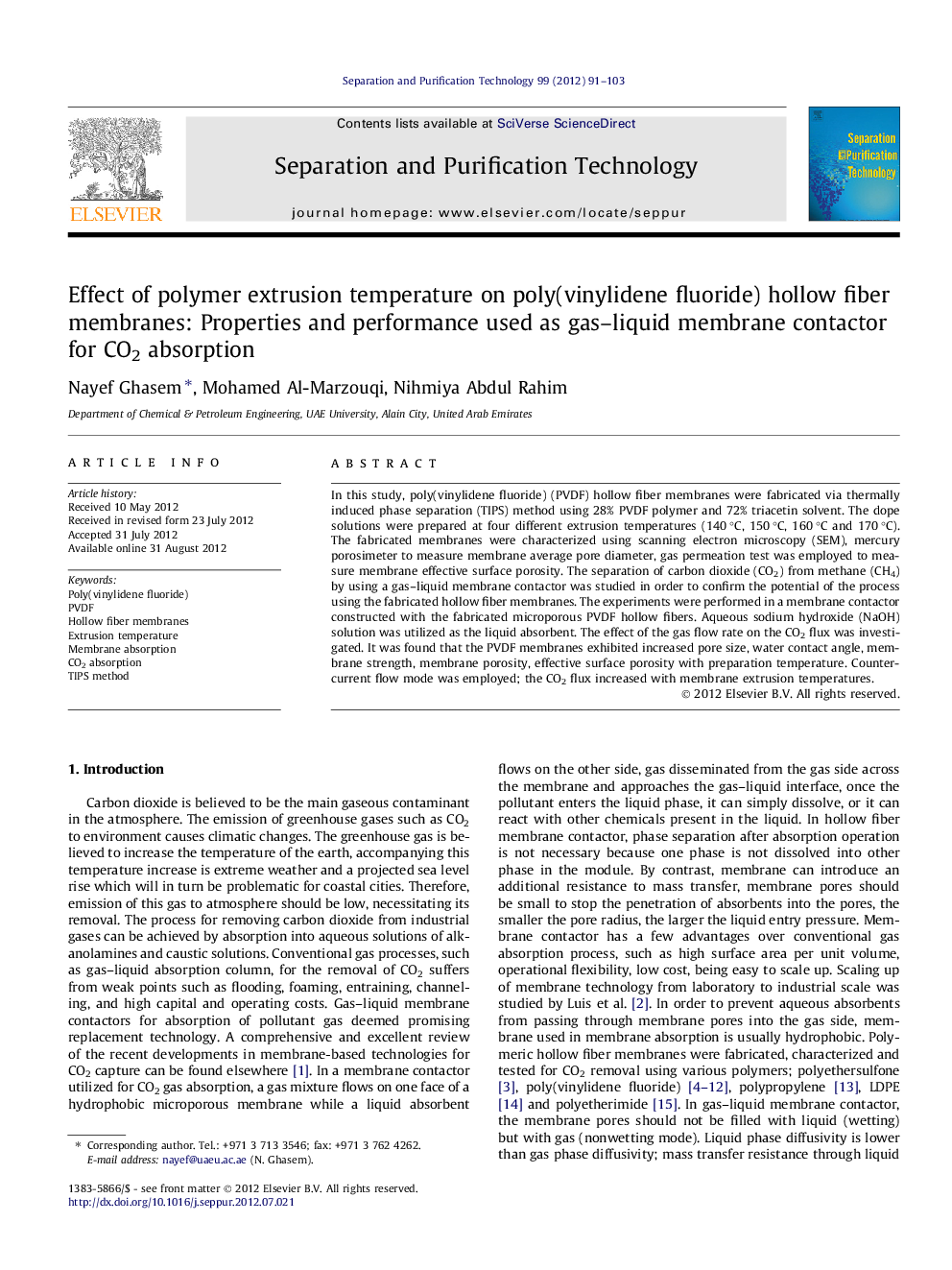| Article ID | Journal | Published Year | Pages | File Type |
|---|---|---|---|---|
| 641992 | Separation and Purification Technology | 2012 | 13 Pages |
In this study, poly(vinylidene fluoride) (PVDF) hollow fiber membranes were fabricated via thermally induced phase separation (TIPS) method using 28% PVDF polymer and 72% triacetin solvent. The dope solutions were prepared at four different extrusion temperatures (140 °C, 150 °C, 160 °C and 170 °C). The fabricated membranes were characterized using scanning electron microscopy (SEM), mercury porosimeter to measure membrane average pore diameter, gas permeation test was employed to measure membrane effective surface porosity. The separation of carbon dioxide (CO2) from methane (CH4) by using a gas–liquid membrane contactor was studied in order to confirm the potential of the process using the fabricated hollow fiber membranes. The experiments were performed in a membrane contactor constructed with the fabricated microporous PVDF hollow fibers. Aqueous sodium hydroxide (NaOH) solution was utilized as the liquid absorbent. The effect of the gas flow rate on the CO2 flux was investigated. It was found that the PVDF membranes exhibited increased pore size, water contact angle, membrane strength, membrane porosity, effective surface porosity with preparation temperature. Counter-current flow mode was employed; the CO2 flux increased with membrane extrusion temperatures.
► We used TIPS method to fabricate PVDF hollow fiber membranes. ► We examine the effects of polymer extrusion temperature on membrane performance. ► Increased polymer preparation temperature increases membrane porosity. ► We used fabricated membranes as membrane contactor. ► We used the membrane contactor for the removal of CO2 from CH4.
